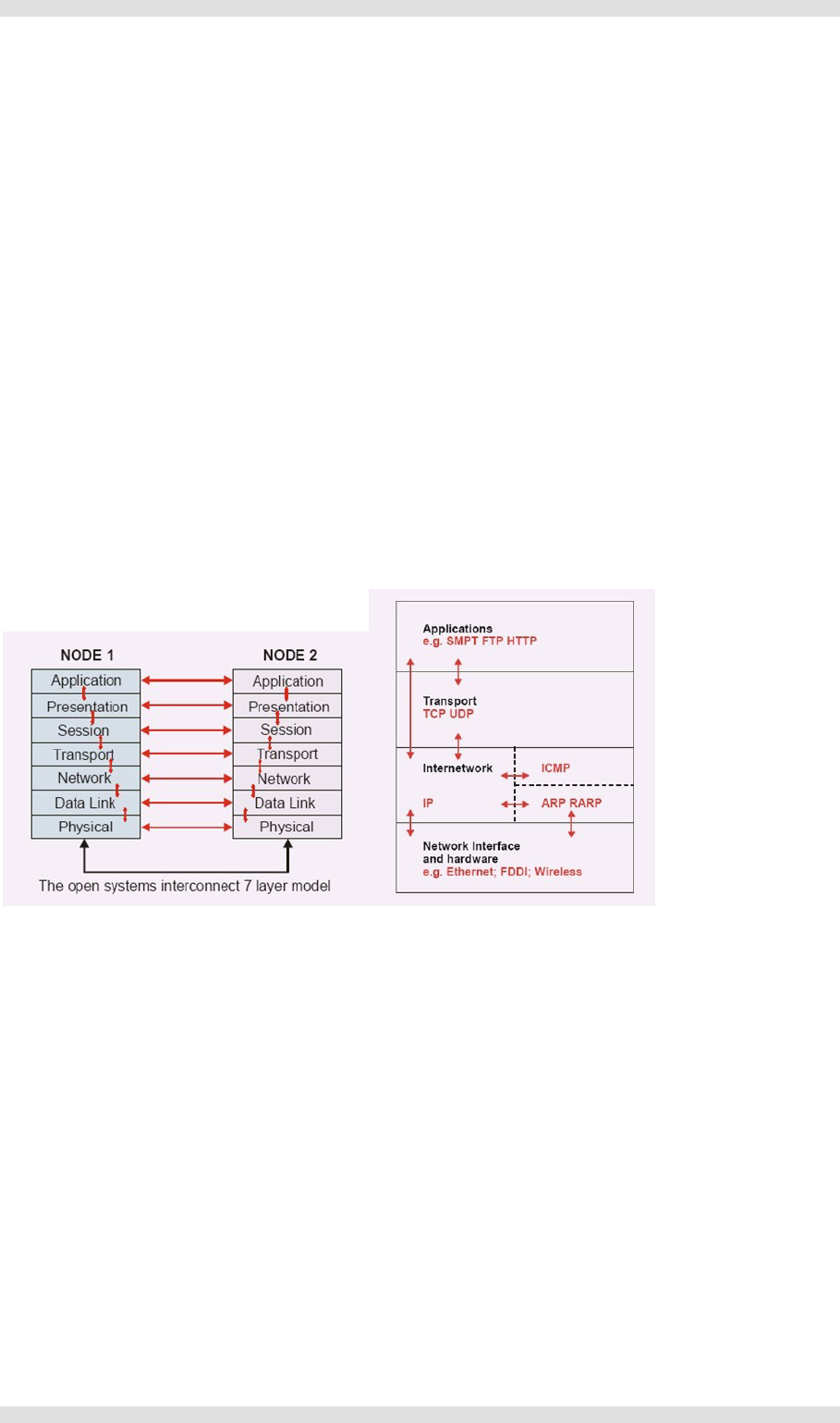User Guide User guide
Table Of Contents
- What is VN-MATRIX?
- Functional Overview
- Example System Application
- Front Panel Features
- Rear Panel Features
- Accessories
- Choosing a Suitable Location
- Mains Power Connection (via PSU)
- Mains Power Cord (for PSU)
- Setup and Connection Procedure
- The VN-MATRIX Web Interface
- Configuring a VN-MATRIX as an Encoder (source)
- Configuring a VN-MATRIX as a Decoder (display)
- Troubleshooting
- Encoder Set Up
- Decoder Set Up
- System Set Up
- Overview
- Setting-up a Serial Data Stream
- Setting-up a Serial Passthrough Group
- Setting-up a Remote Control Group
- Serial / Telnet Commands
- Overview
- VN-MATRIX Hardware
- Serial Interface – Quick Reference
- Telnet Interface – Quick Reference
- Web Interface – Quick Reference
- Network Characteristics

Appendix B: Understanding Network Performance VN-MATRIX User Guide
I458GB issue 6 Page 131
Protocols
For communication to work over networks there must be some formality about how communication is
done in order to ensure inter-operability between different systems. The ISO proposed a model for
this in its Open Systems Interconnection (OSI) model. It defines seven different “layers” for any
intercommunication protocol, starting at the bottom with a “physical” layer (which might be Ethernet,
wireless or some standard serial communications method) going to the top which is the “application”
layer relating to the actual task in hand.
The OSI model is used as a reference, and while some systems follow the full model, others simplify it
by combining the functions of certain layers. In particular the protocol stack which is the basis of
standard Ethernet communication only has four layers, as indicated in the figure below.
The Internetwork layer combines the functions of the Data Link and Network layers of the OSI model
and looks after addressing, carrying Internetwork Protocol (IP) within the MAC frame. The current
version of Internetwork protocol is IPv4 which uses a 32 bit address. IPv6 with 128 bit addressing is
being introduced to solve the possible problem of running out of available IP addresses and to provide
certain other enhancements.
The Transport layer is possibly of most significance in respect of sending images over networks. It is
here that data is formatted into datagrams suitable for transmission by IP. Here there are two
significant protocols, User Datagram Protocol (UDP) and Transmission Control Protocol (TCP).
The OSI model (left) defines seven layers of interconnection. The system behaves as if, at each layer, there is
direct connection between each node; but in fact communication is through the layers. With Ethernet and most
data networks the preferred model is the TCP/IP four layer protocol stack (right).










